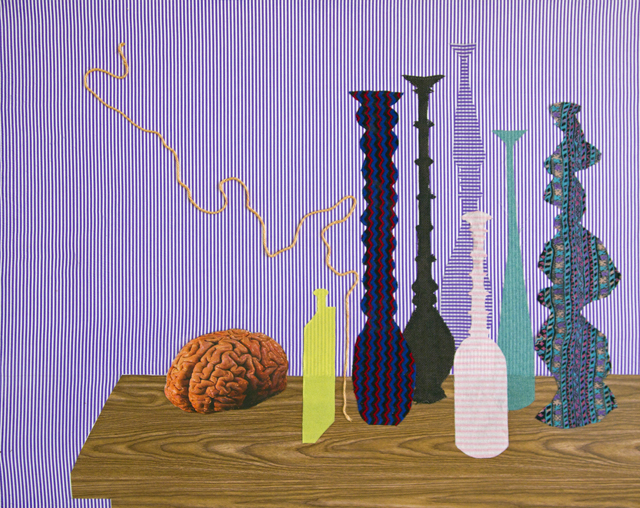Briefly describe the work you do.
I don’t have a specific agenda or medium. I try to pay attention and articulate myself with whatever material I have a vision for at the time.
Tell us a little about your background and how that influences you as an artist.
I grew up in Montana. There is an interesting dichotomy there. It carries a certain picturesque romanticism that often rings untrue. Vast ideals of nature conjoin with the discarded refuse of urban living. Regardless, it still is one of the “last best places”. People are incredibly mixed there, some are trying to escape from their past, others never leave. Outlaws and inbreds aplenty.
Much like the future, I see the past with uncertainty. Though I visualize my history with clarity and can describe innumerable occurrences in my life that carry significance, I am skeptical toward the implementation of memory. It is too easily manipulated and can be deceitful. That said, I am sure growing up in Montana has had an impact on me. I often find that influential experiences carry a mysterious quality. I never know what sort of thing is going to have a transformative effect on my outlook. It could be something incredibly mundane and seemingly insignificant. I know that these experiences become part of my history. That history is drawn as a diverging line from the present.
The concept of the “artist studio” has a broad range of meanings, especially in contemporary practice. The idea of the artist toiling away alone in a room may not necessarily reflect what many artists do from day to day anymore. Describe your studio practice and how it differs from (or is the same as) traditional notions of “being in the studio.”
I spend a good amount of time brooding in the studio. When I’m not in the studio I’m usually brooding away somewhere else, observing the things around me. I do like to work out ideas away from the confines of my small white room. This amounts to many activities from countless hours drawing in public places to putting potential sculptures together in my “local” Walmart.
What unique roles do you see yourself as the artist playing that you may not have envisioned yourself in when you first started making art?
Being the interviewee. Socialite. Businessman.
When do you find is the best time of day to make art? Do you have time set aside every day, every week or do you just work whenever you can?
I work whenever I can. I’ve found that I work most seamlessly during the early morning and late at night.
How has your work changed in the last five years? How is it the same?
The work is always changing. If it’s not changing, there is a problem. The work is similar in that it comes from the same source, relatively. I’m not a completely different person than I was five years ago. Hopefully the changes in the work reflect the wisdom acquired in this time.
Are there people such as family, friends, writers, philosophers or even pop icons that have had an impact on the work you do?
Probably too many to list in any brevity here. Here are a few: Shakespeare, Kafka, William Blake, Aldous Huxley, Nietzsche, David Bowie, Jimi Hendrix.
If you had an occupation outside of being an artist, what would that be and why?
I’ve had many occupations outside being an artist and I didn’t like any of them. Maybe a conman…similar rules apply.
About
 Eric Ashcraft (b. 1983, Billings, Montana) acquired a BFA from the University of Montana in 2006 and finished his MFA in painting at The School of the Art Institute of Chicago in 2009. Ashcraft’s work has been known to navigate between multiple means of production including painting, sculpture, photography, performance, sound, and installation.
Eric Ashcraft (b. 1983, Billings, Montana) acquired a BFA from the University of Montana in 2006 and finished his MFA in painting at The School of the Art Institute of Chicago in 2009. Ashcraft’s work has been known to navigate between multiple means of production including painting, sculpture, photography, performance, sound, and installation.
Ashcraft’s work can be characterized by a strong emotional and mental connection with impermanence, loss, and malleability of form. His treatment of materials varies in great degree from the painterly to the sculptural, often fusing aspects of both into singular works.
Recent exhibitions in which Ashcraft has contributed include: NEXT invitational exhibition of emerging art at Art Chicago, Chicago; Patrajdas Contemporary, Chicago; Painting Centric at Cal Arts, Valencia, California; The Factory Underground, Greenwich, Connecticut; “Poseur” at Grizzly Grizzly, Philadelphia; “Taste” at Small Black Door, Queens, New York; and “The Bottom Line” at 3433, Chicago.
Ashcraft has taught at institutions including the Oxbow School of Art (2011), The Art Institute of Illinois (2010-2011), and the School of the Art Institute of Chicago (2009-2011).
All images copyright of the artist and used with their permission.




